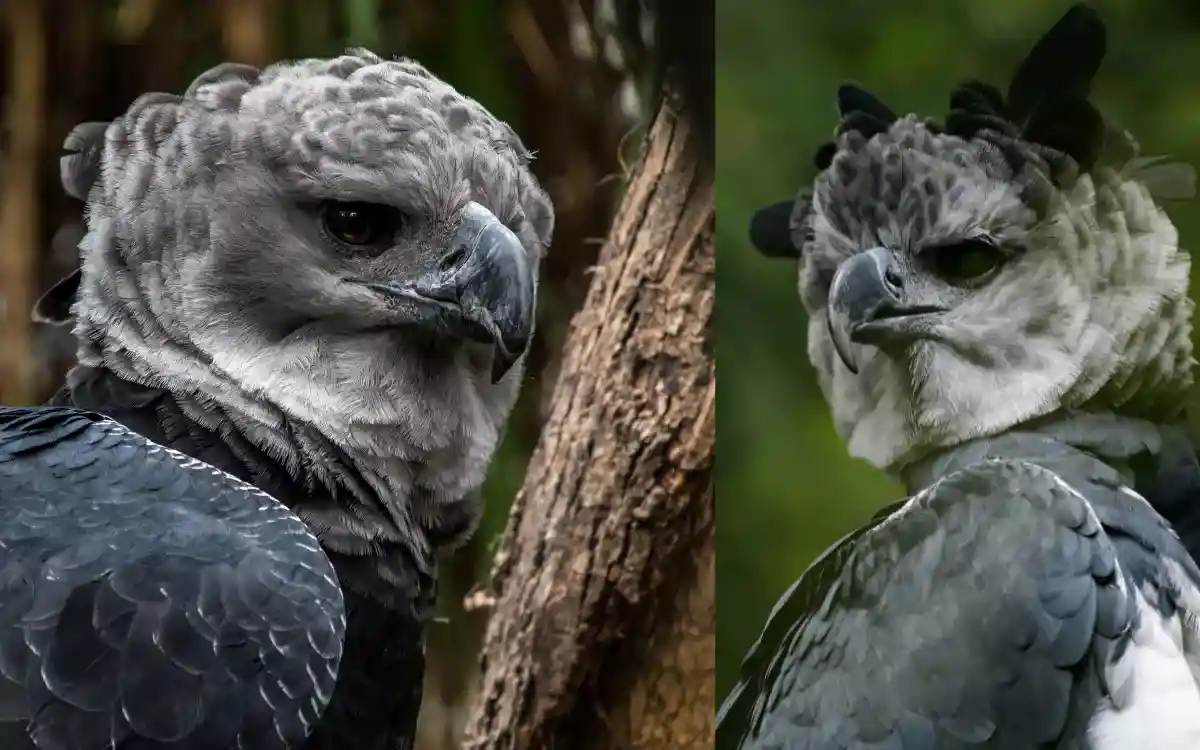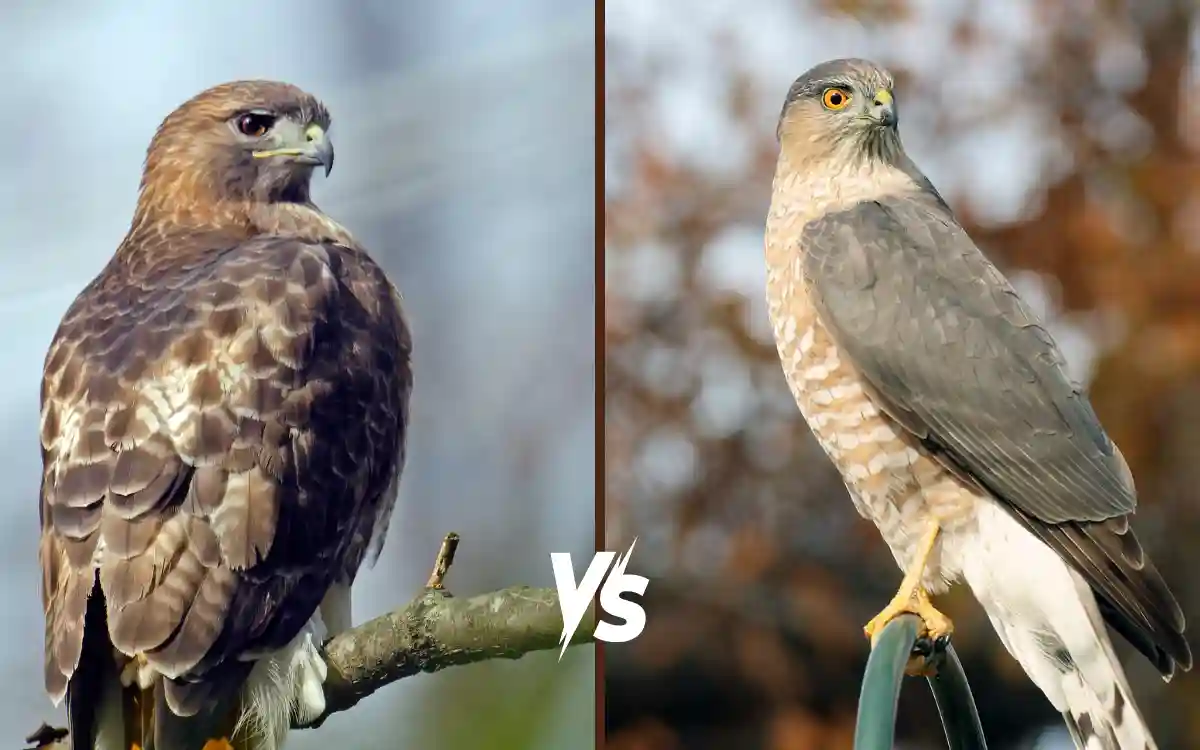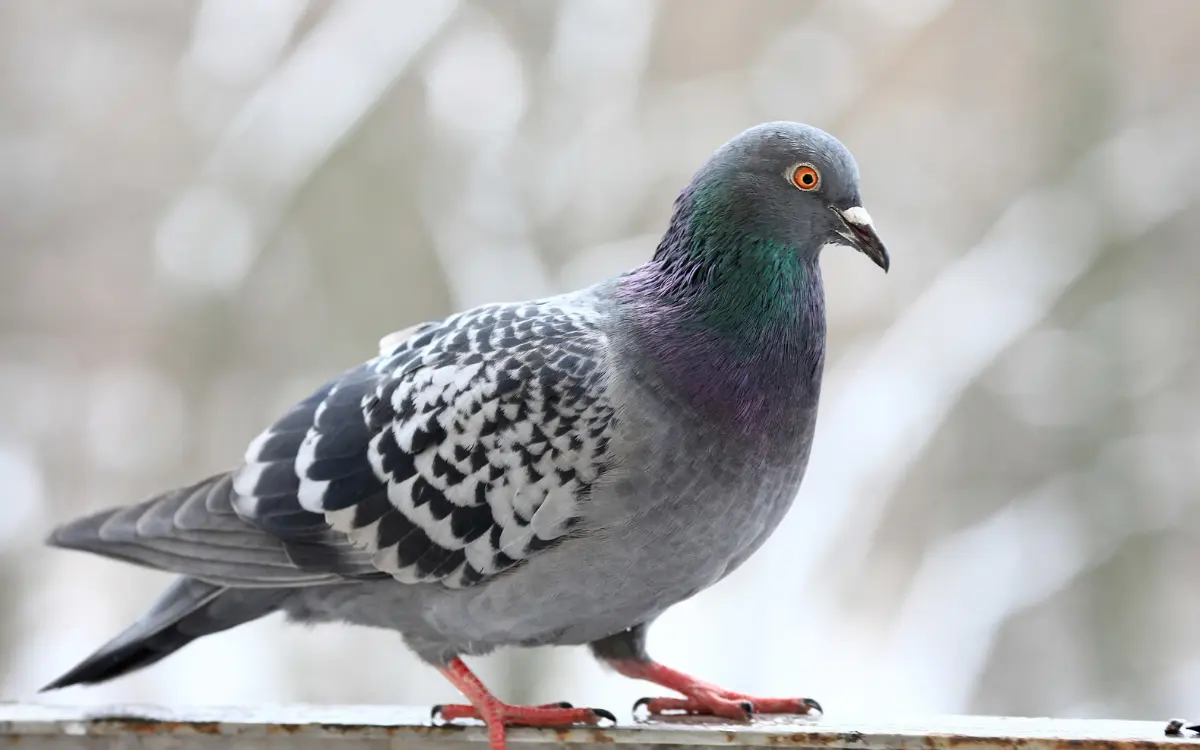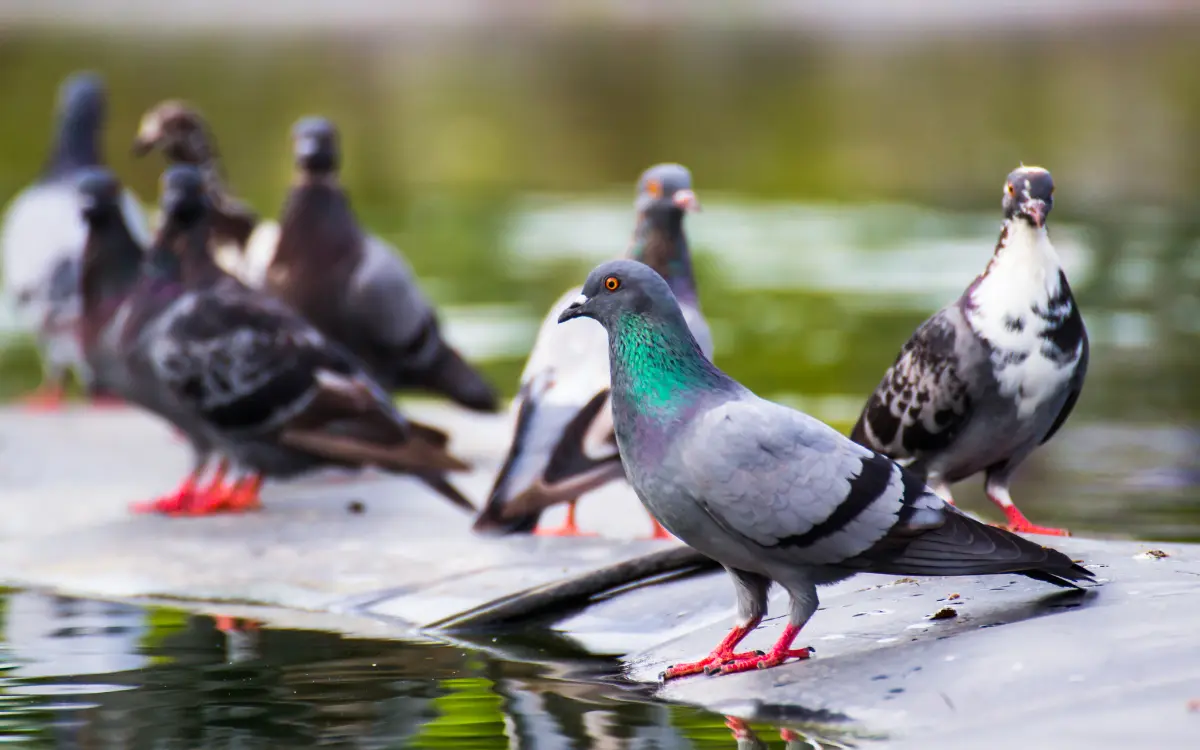Pigeon vs. Mourning Dove: Differences & Similarities Explained
Pigeons and mourning doves are common yet distinct birds. Understanding their differences and similarities aids in their identification and appreciation.
This article will explore their taxonomy, physical traits, habitats, behaviors, interactions with humans, and conservation status, highlighting key differences and commonalities.
Taxonomy and Classification
Scientific Names and Classification
- Pigeons belong to the family Columbidae, with the common pigeon known as Columba livia.
- Mourning doves, also part of the Columbidae family, are classified as Zenaida macroura.
Differences in Species and Sub-species
- Pigeons have various species and subspecies, including rock pigeons, homing pigeons, and feral pigeons.
- Mourning doves have fewer subspecies, mainly differentiated by slight variations in size and plumage, such as the eastern and western mourning doves.
Physical Characteristics
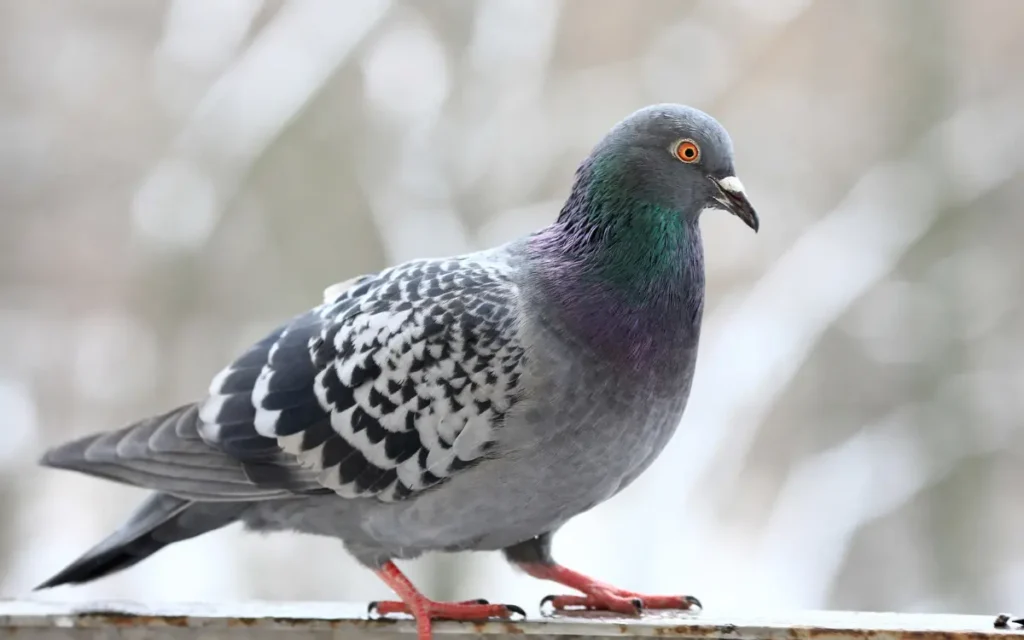
Calls:-
Size and Weight Comparison
- Pigeons: Typically range from 11-14 inches in length and weigh about 9-13 ounces.
- Mourning Doves: Generally smaller, about 9-13 inches long, and weigh around 3.5-6 ounces.
Plumage Color and Pattern
- Pigeons: Varied colors, often grey with iridescent neck feathers, and sometimes white, black, or brown.
- Mourning Doves: Soft grayish-brown with black spots on wings and a subtle pinkish hue on the breast.
Beak and Feet Structure
- Pigeons: Short, stout beaks adapted for seed and grain consumption; feet are reddish with three forward-facing toes and one backward.
- Mourning Doves: Slender, slightly curved beaks suited for pecking seeds; feet are pinkish with a similar toe arrangement as pigeons.
Wing Shape and Flight Style
- Pigeons: Broad, rounded wings enable strong, direct flight with rapid wingbeats.
- Mourning Doves: Long, pointed wings allow for fast, darting flight with a characteristic whistling sound during takeoff.
Habitat and Distribution
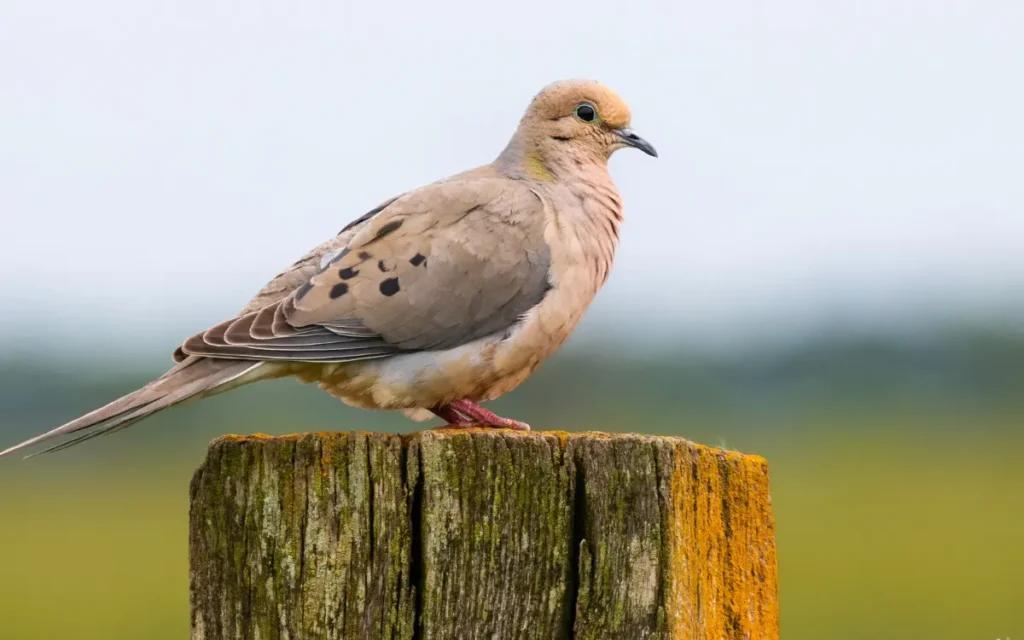
Calls:-
Geographic Range of Pigeons
- Pigeons: Found worldwide, particularly in urban and suburban areas; originally native to Europe, North Africa, and western Asia.
Geographic Range of Mourning Doves
- Mourning Doves: Primarily found throughout North America, from southern Canada to Panama; common in both rural and urban settings across the continent.
Preferred Habitats (Urban vs. Rural)
- Pigeons: Prefer urban environments with abundant food sources; often found in cities, parks, and agricultural areas.
- Mourning Doves: Favor open and semi-open habitats, including farmland, grasslands, and suburban gardens; less common in densely urbanized areas.
Migration Patterns
- Pigeons: Generally non-migratory; they remain in the same area year-round.
- Mourning Doves: Partial migrators; northern populations migrate south during winter, while those in the southern range tend to be resident year-round.
Behavior and Lifestyle
Feeding Habits and Diet
- Pigeons: Omnivorous, primarily eating seeds, grains, fruits, and occasionally small invertebrates. In urban areas, they often scavenge for food scraps.
- Mourning Doves: Mainly granivorous, feeding on seeds from grasses, weeds, and cultivated crops. They forage on the ground, picking seeds one by one.
Nesting Behaviors and Locations
- Pigeons: Build nests from sticks and debris in sheltered locations such as building ledges, bridges, and cliffs. Both parents share incubation duties.
- Mourning Doves: Construct flimsy nests from twigs and grasses in trees, shrubs, or on the ground. Both parents participate in nest building, incubation, and feeding the young.
Social Structure and Flocking Behavior
- Pigeons: Highly social birds that form large flocks, especially in urban areas. They exhibit strong homing instincts and communal roosting.
- Mourning Doves: Generally seen in pairs or small groups. They form larger flocks during migration or in winter but are less gregarious than pigeons.
Vocalizations and Calls
- Pigeons: Known for their soft cooing sounds, often used in courtship and communication within the flock.
- Mourning Doves: Produce a distinctive mournful cooing sound, often mistaken for an owl’s call. Their wings make a characteristic whistling noise when they take flight.
You may also reads Pigeon Meaning: Symbolism and Significance Explained
Reproduction and Lifespan
Breeding Season and Mating Rituals
- Pigeons: Can breed year-round, especially in warmer climates. Mating rituals include cooing, puffing up feathers, and bowing displays. Males often perform a courtship flight.
- Mourning Doves: The breeding season typically runs from spring through late summer. Courtship involves males chasing females, puffing up their chests, and performing flight displays.
Egg Incubation Period and Parental Care
- Pigeons: Usually lay 1-2 eggs per clutch. Both parents share incubation duties, which last about 17-19 days. After hatching, both parents feed the chicks with “pigeon milk,” a nutrient-rich secretion from the crop.
- Mourning Doves: Typically lay 2 eggs per clutch. Both parents take turns incubating the eggs for about 14 days. After hatching, both parents feed the chicks crop milk initially, transitioning to seeds as they grow.
Lifespan in the Wild and Captivity
- Pigeons: In the wild, pigeons live around 3-5 years due to predation and environmental hazards. In captivity, they can live up to 15 years or more with proper care.
- Mourning Doves: In the wild, mourning doves have a shorter lifespan, averaging 1.5 years due to high predation rates. However, some can live up to 5 years or more. In captivity, their lifespan can extend to around 10 years with proper care.
Interaction with Humans
Historical Significance and Cultural Impact
- Pigeons: Have a long history of domestication, dating back thousands of years. They have been used for communication (carrier pigeons), sport (pigeon racing), and as a food source. Pigeons are often depicted in art and literature, symbolizing peace, love, and sacrifice.
- Mourning Doves: Represent peace and love in various cultures. They are also featured in Native American folklore and are a popular subject in poetry and music due to their distinctive, melancholic call.
Role in Urban Environments
- Pigeons: Thrive in urban settings, where they find abundant food and nesting sites. They are a common sight in cities worldwide, often considered both a nuisance and a beloved urban wildlife species.
- Mourning Doves: Less common in densely populated urban areas but frequently found in suburban gardens and parks. They adapt well to human-altered landscapes, benefiting from bird feeders and backyard habitats.
Differences in Domestication and Use (e.g., Carrier Pigeons)
- Pigeons: Extensively domesticated for various purposes. Carrier pigeons, also known as homing pigeons, were historically used for delivering messages due to their strong homing ability. Pigeon racing remains a popular hobby.
- Mourning Doves: Not typically domesticated. They are primarily wild birds, appreciated for their beauty and song. However, they are sometimes hunted for sport and food in certain regions.
Impact on Agriculture and Ecosystems
- Pigeons: Can cause damage to crops by feeding on grains and seeds. In urban areas, their droppings can deface buildings and monuments and pose health risks. However, they also play a role in seed dispersal.
- Mourning Doves: Generally have a minimal negative impact on agriculture. They primarily consume weed seeds, which can be beneficial to farmers. Their presence in ecosystems contributes to seed dispersal and serves as prey for various predators, maintaining ecological balance.

